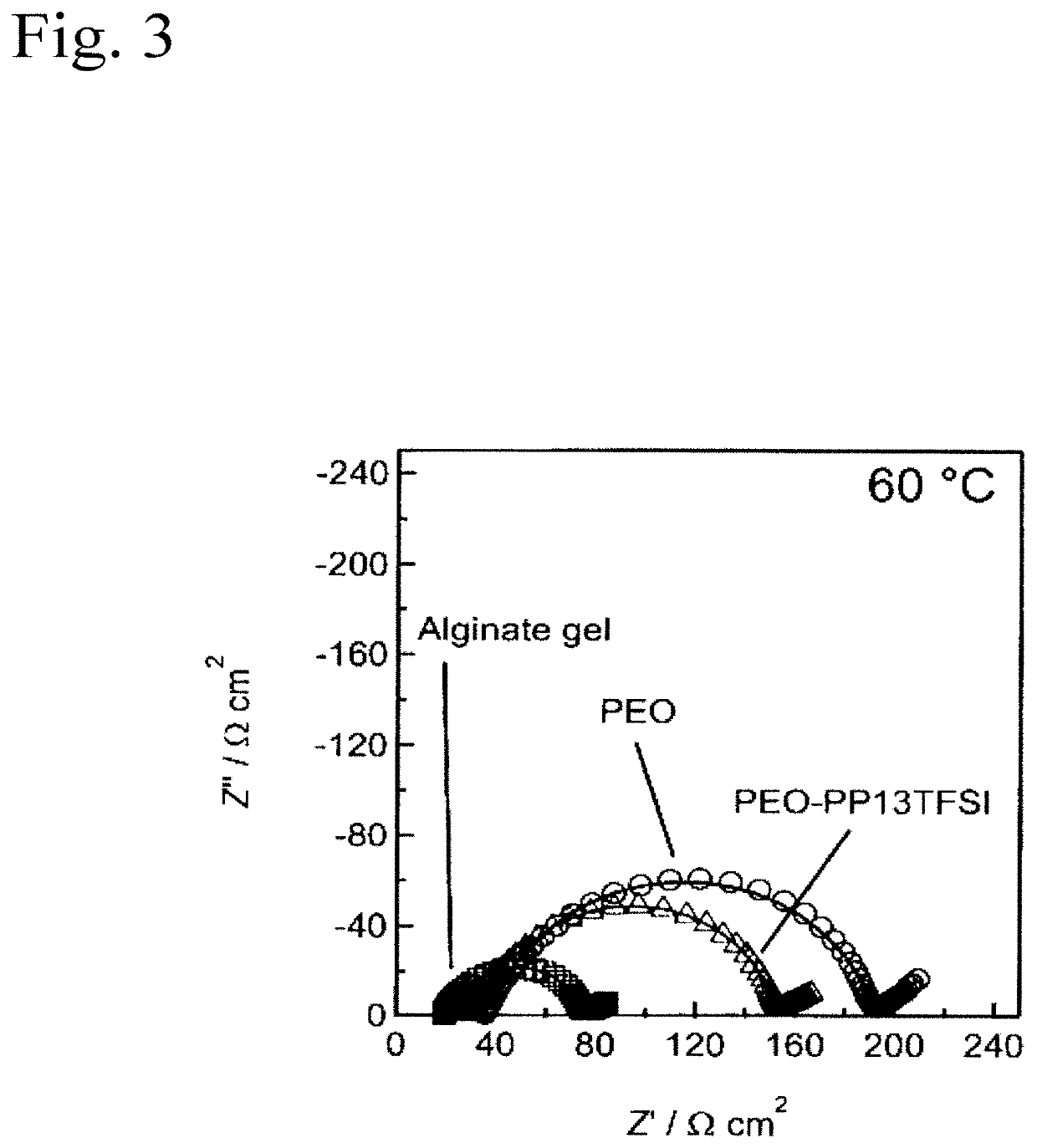Lithium composite negative electrode and hybrid capacitor, and manufacturing methods thereof
a composite negative electrode and hybrid capacitor technology, applied in the direction of negative electrodes, electrolytic capacitors, cell components, etc., can solve the problems of high internal resistance, low cell voltage, high price compared to aqueous electrolytes, etc., to reduce the interfacial resistance of the electrode, high energy density, and safe and durable
- Summary
- Abstract
- Description
- Claims
- Application Information
AI Technical Summary
Benefits of technology
Problems solved by technology
Method used
Image
Examples
example 1
omposite Negative Electrode D
[0089]A lithium composite negative electrode D of Example 1 was configured using a lithium-doped carbon as the negative electrode active material layer 21, alginate gel electrolyte as the polymer electrolyte 22, and LTAP as the solid electrolyte 23.
[0090]In this lithium composite negative electrode D, the lithium-doped carbon 21 was placed on one end of the metal nickel foil serving as the negative electrode current collector 17, and the alginate gel electrolyte cut into a 6-mm square was stacked as the polymer electrolyte 22 on the lithium-doped carbon 21. Furthermore, LTAP cut into a 10-mm square was stacked thereon. Thus, the lithium composite negative electrode D of Example 1 was prepared. Even with the lithium composite negative electrode D, lamination was performed in the same manner as in Comparative Example 1, providing the measurement window and the like where LTAP was in contact with the aqueous electrolyte 13.
(Preparation of Lithium-Doped Carb...
example 2
omposite Negative Electrode E
[0109]A lithium composite negative electrode E of Example 2 was configured using a graphite as the negative electrode active material layer 21, alginate gel electrolyte as the electrolyte 22, and LTAP as the solid electrolyte 23. In Example 2, the alginate gel was obtained by crosslinking with CaCl2. Using 0.5 mol / L of LiFSI (solvent: P13FSI) as a lithium salt to be impregnated in the alginate gel, the pre-doping of lithium was carried out using 1 mol / L aqueous Li SO4 (25° C.).
[0110]In the lithium composite negative electrode E as well, the graphite 21 was placed on one end of a metal nickel foil serving as the negative electrode current collector 17, and the alginate gel electrolyte cut into a 6-mm square was stacked as the electrolyte 22 on the lithium-doped carbon 21. Furthermore, LTAP cut into a 10-mm square was stacked thereon. Thus, the lithium composite negative electrode E of Example 2 was prepared. Lamination for the lithium composite negative e...
PUM
| Property | Measurement | Unit |
|---|---|---|
| operating temperature | aaaaa | aaaaa |
| temperature | aaaaa | aaaaa |
| thickness | aaaaa | aaaaa |
Abstract
Description
Claims
Application Information
 Login to View More
Login to View More - R&D
- Intellectual Property
- Life Sciences
- Materials
- Tech Scout
- Unparalleled Data Quality
- Higher Quality Content
- 60% Fewer Hallucinations
Browse by: Latest US Patents, China's latest patents, Technical Efficacy Thesaurus, Application Domain, Technology Topic, Popular Technical Reports.
© 2025 PatSnap. All rights reserved.Legal|Privacy policy|Modern Slavery Act Transparency Statement|Sitemap|About US| Contact US: help@patsnap.com



